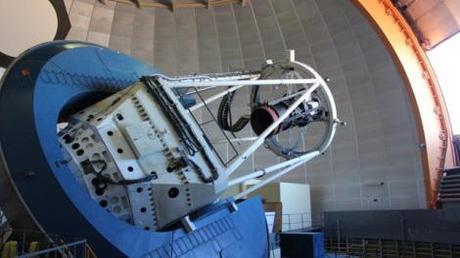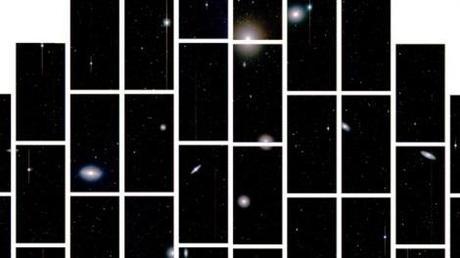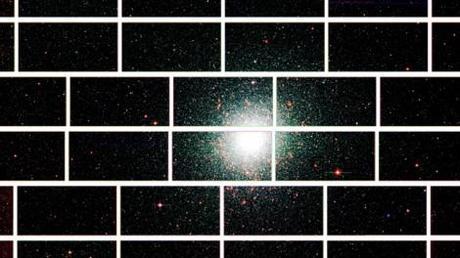Eight billion years ago, rays of light from distant galaxies began their long journey to Earth. That ancient starlight has now found its way to a mountaintop in Chile, where the newly-constructed Dark Energy Camera, the most powerful sky-mapping machine ever created, has captured and recorded it for the first time.
The distances never ceases to amaze me.
Aye, we caught our first glimpse of some of the Universe’s most far-flung galaxies. We did it with the help of the ”Dark Energy Camera”, a high-powered camera that NOAA calls ”the most powerful sky-mapping machine ever created”

The Dark Energy Camera, mounted on the Blanco telescope in Chile
The camera is a 570-megapixel astronomical-imaging giant will be used in the Dark Energy Survey to scan the depths of space for signs of, well, dark energy. This form of energy makes up roughly more than 70% of the Universe and drive its ever-accelerating expansion. It also remains as one of the most enigmatic topics of investigation in modern Cosmology. They are looking for an answer to the question, why the expansion of the universe is speeding up?
For the next five years, the camera — which is housed inside the Blanco telescope, high in the mountains of South America’s Atacama desert — will be used to create detailed color images of one-eighth of the sky. The camera is very capable and it candetect light from cosmic entities as much as 8 billion light years from Earth, astronomers think that the Dark Energy Camera will be used to identify and study upwards of 300 million galaxies, 100,000 galaxy clusters and 4,000 supernovae. In the process, they hope to unlock some of the secrets behind the Universe’s expansion.
“The achievement of first light through the Dark Energy Camera begins a significant new era in our exploration of the Cosmic Frontier,” said James Siegrist, DOE associate director of science for high-energy physics. “The results of this survey will bring us closer to understanding the mystery of dark energy and what it means for the universe.”
Hundreds of millions of galaxies. And it’s just sent back its first batch of images. Here are some captured by the DECam, released earlier today by Fermilab (the famed accelerator lab actually built the camera).
Here we go:

Barred spiral galaxy NGC 1365, in the Fornax cluster of galaxies, which lies about 60 million light years from Earth.

Fornax cluster of galaxies

Center of the globular star cluster 47 Tucanae, which lies about 17,000 light years from Earth.
N.
Via: Fermilab & iO9

